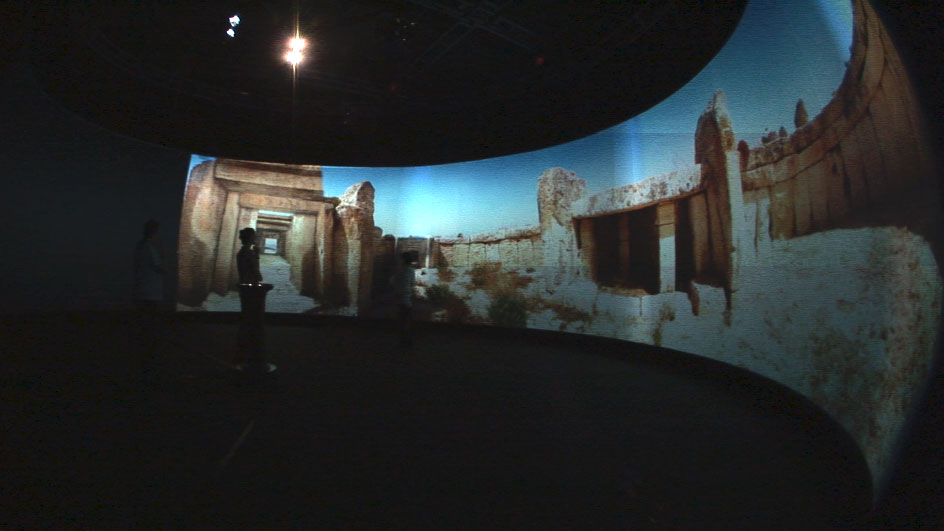Spaces of Mnajdra evokes the architectural sophistication and compelling presence of the Mnajdra (‘mna-ee-dra’) prehistoric Temples in South Malta. Located by the Mediterranean and still within the ‘garigue’ landscape of open low lying scrub Mnajdra is one of the most atmospheric and better-preserved stone temples scattered across the Maltese islands
Dating from circa 3,600BC-2,500BC, building of the Mnajdra temples began before Stonehenge and the pyramids of Giza and continued for over a thousand years. Opening into three temple structures from an oval forecourt, entry is through large uprights constructed with lintels and porthole doorways to semi-circular side chambers and an array of hidden niches. Along with the crafted pots and figurines, the significance of this very early architecture has been recognised through UNESCO world heritage listing in 1992.
In Spaces of Mnajdra, the spatial environment of the heritage site is recreated in a wrap around high quality projection, set within a large room. The visitor is encircled by a 30-meter wide vista of the forecourt of the Mnajdra Temples accompanied by the ambient sounds of local scrubland birds and the distant sounds of the Mediterranean.
Ahead the concave façade leads to three temple clusters. Human figures moving through monumental doorways invite you inside the temple. As you step towards the entrance of the Lower, Middle or East temples, the forecourt panorama slowly changes to the inside of a semi-circular chamber.
As you walk around the internal space of the room, two unique experiences take place simultaneously. Surrounded by details of the fascinating structure you are able to closely observe ancient pitting, graffito, notches and recesses set within the limestone architecture. Using state-of-the-art motion tracking and a shadow outline of your position in the room, you can explore all five main chambers within the Mnajdra site, along with the tiny rooms between walls and the hidden recess behind the external wall of the lower temple currently closed to visitors.
A pedestal sensor wand located in the middle of the room transforms the panoramic vision to the Neolithic. On lifting the wand, visitors enter an enclosed labyrinth of arched walls and shadowy niches lit only by the ambient light through the doorway and flares accompanied by the organic sounds and fleeting images of human presence. As the wand is pointed to different parts of the chamber figurines, bowls, and pottery fragments are revealed in the torch-like beam and can be rotated and seen from all sides. The figurines include extreme expressions of part animal and human forms along with a range of limbs and other body parts such as torsos, legs, phalli and a head.
The construction of these atmospheric environments and intriguing artefacts hints at ceremonial usage and ritual meaning. However, Maltese temple culture ended around 2,500BC without written records, leaving us with many questions unanswered. Spaces of Mnajdra entices you to explore the spaces and artefacts within it – to obtain a sense of your own presence inside the temple architecture and consider other more ancient encounters.


